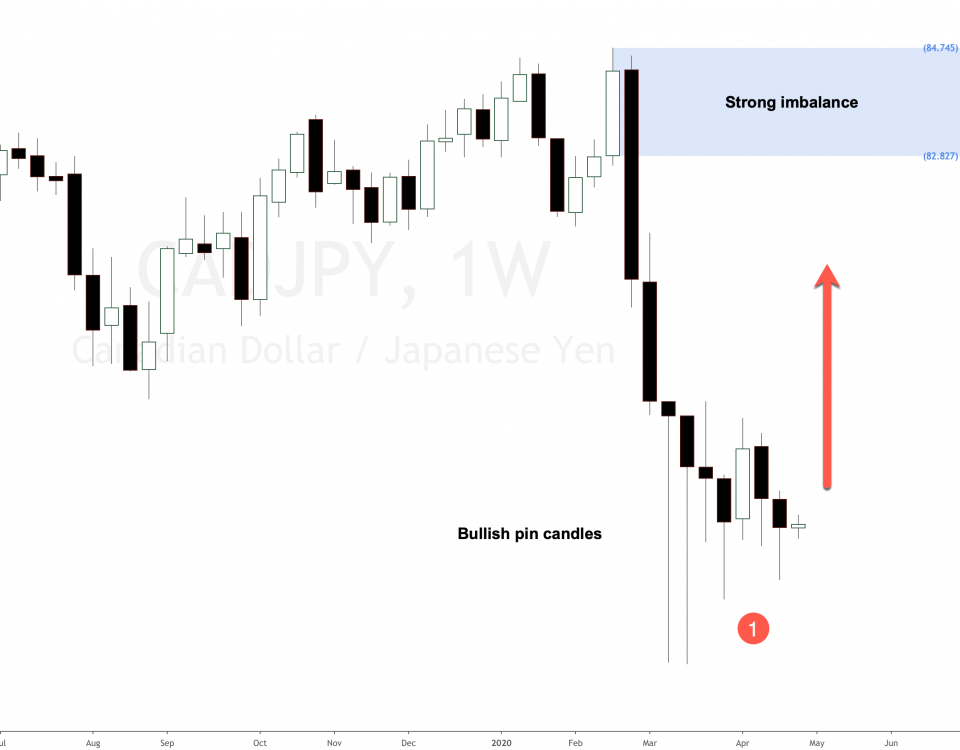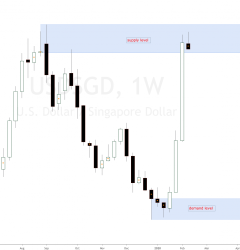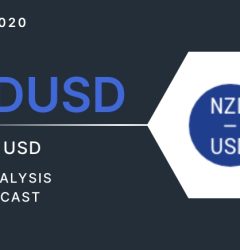28 Apr

Over recent years, CAD/JPY currency cross has become very popular and highly correlated with oil price. Canada is the second-largest owner of oil reserves and has benefited from the rise in oil prices.
On the other hand, Japan heavily relies on imported oil. Over 99% of Japan’s crude oil is imported, as it has almost no native oil reserves.
CAD JPY price chart analysis
The supply and demand analysis for the CADJPY weekly timeframe below shows how price action tells us a lot about future moves on this currency pair. We can see bullish pin candles around #1 with a lot of room to keep rallying until the strong weekly supply imbalance around 82.80 is reached. Intraday traders may have great opportunities to trade up if we start seeing daily and weekly highs eliminated.

CAD/JPY forex price action analysis
This is the kind of price action technical analysis you will learn in our trading community. You will learn how to locate new supply and demand imbalances and trade without using any indicators, no news, no fundamental analysis, no earnings announcements, no volume or VSA analysis. Just supply and demand imbalances.
Trading supply and demand imbalances is ideal for beginners and those with full or half-time jobs. You won’t need to stay in front of the computer all day long trying to move price action with your mind.
CAD JPY supply and demand imbalances
As supply and demand traders, we do not need to pay attention to the news, fundamentals or any earnings reports. Once a big timeframe imbalance has gained control, earnings do just the opposite and react strongly to those imbalances. Why do you see positive earnings and then the underlying stock drops like a rock, or a negative earnings announcement and the stock rallies like a rocket out of control? You are probably missing the fact that there are big imbalances in gaining control.
You should not worry about fundamentals or earnings announcements unless you are doing very short-term trading and scalping.
You can use these imbalances to plan your trades in lower timeframes. Trading is just waiting for the right trigger points and scenarios to present themselves, this game has got a name, and it’s called the waiting game. We need to patiently wait for the correct scenarios and setups to happen and wait for the price to pull back or dip into the price levels we want to trade, in our case these price levels are made of supply and demand imbalances.
Join our supply and demand Forex trading course to learn how to trade using our supply and demand forex trading strategy.
There are several ways of buying stocks and futures. When trading stocks, you can buy shares of the underlying stock or use options strategies to go long or short at these specific supply and demand levels, long calls or long puts or spreads. You can even buy a CFD (contracts for difference) if you are in a country where it’s allowed.









